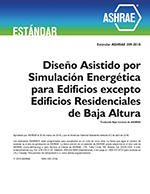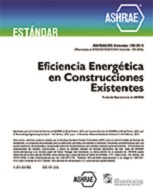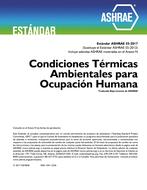Description
Simulations were conducted to make assessments regarding life cycle costs of hybrid ground source heat pump (GSHP) systems with different pumpingconfigurations on an elementary school design in Dallas, Texas, Climate Zone 3A. Long term simulations evaluated the systems’ performance over a 20year period. The base case in this study is an all-ground heat exchanger (all-GHX) configuration. A closed circuit cooling tower (CCCT) and dry fluidcooler (DFC) were separately modeled to provide supplemental heat rejection in hybrid systems. Life cycle costs of the hybrid systems presented herein forthe example building are estimated between 35-40% less than an all-GHX configuration. The base case life cycle cost is estimated at $894,000 whilethe hybrid options ranged from $565,000 to $578,000. These likely do not represent the lowest life cycle cost designs which would balance the sizing ofthe system components including the ground source heat exchanger and supplemental heat rejection device with the associated energy costs’ present value. Inmany instances, there are space constraints on sizing individual components, most notably the GHX. As such, the alternate hybrid designs arbitrarilyutilize 140 bores which is one-half the size of the example design at 280 bores, with the addition of a supplemental heat rejection device which is sized tomaintain acceptable borefield temperatures.
The control scheme modeled in all hybrid systems is considered common in industry, and inherently allows loop temperatures to elevate, andforms a valid basis upon which to make conclusions regarding life cycle cost comparisons between an all-GHX design and Hybrid systems. The heatpump entering water loop temperature (EWT) target was designated as 95°F (35°C), but iterations to reduce the sizing of the supplemental heatrejection device and allow higher temperatures of no more than 100°F (38°C) were acceptable if resultant life cycle costs were favorable. DFC physicalsize and acoustical concerns were peripheral considerations.
Hybrid systems are designated as Case 1, 2, 3 & 4. Additional simulations with further reduced borefields are briefly explored whichindicated life cycle costs savings of over 40% with total life cycle costs of around $500,000, and noted as Case 1A and Case 4A. Pumpingconfigurations included the use of dual individual circulator pumps, single circulator pumps with a central variable speed booster pump, and a singlecentral variable speed pump. The base case which utilized dual circulator pumps used the most pump energy, while a central variable speed pumpachieved 60% pump energy savings. Borefields utilizing central hybrid configurations with different circulation pumping schemes are compared to the all-GHX multi-pod configuration and comparative life cycle costs are presented.
Citation: 2016 Annual Conference, St. Louis, MO, Conference Papers
Product Details
- Published:
- 2016
- Number of Pages:
- 8
- Units of Measure:
- Dual
- File Size:
- 1 file , 710 KB
- Product Code(s):
- D-ST-16-C025




